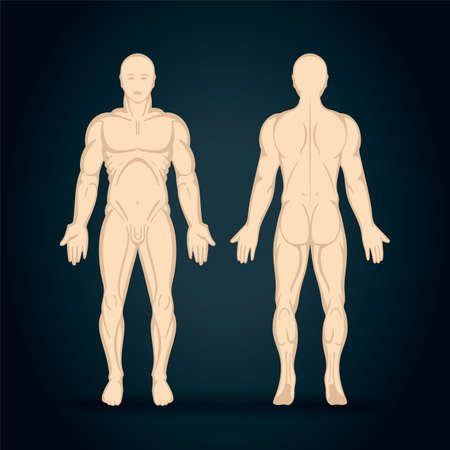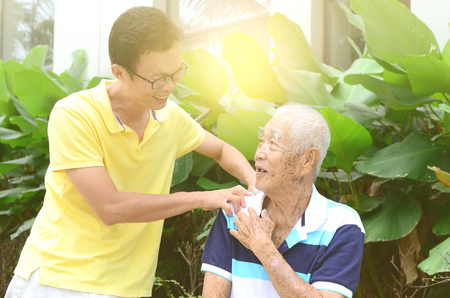Introduction to Falls Among Older Adults in the U.S.
Falls are a serious concern for older adults living in the United States. Every year, millions of seniors experience falls, and these incidents can have life-changing effects on their health and independence. Understanding why falls happen, who is most at risk, and what happens after a fall is key to helping prevent them. Occupational therapy plays a crucial role in this effort, offering strategies and support to keep seniors safe and active.
Prevalence of Falls in American Seniors
According to the Centers for Disease Control and Prevention (CDC), about one out of every four Americans aged 65 or older falls each year. Falls are actually the leading cause of both fatal and nonfatal injuries among seniors in the U.S. The numbers are significant:
| Statistic | Details |
|---|---|
| Annual Falls | 36 million older adults report a fall each year |
| Fall-Related Injuries | Over 3 million treated in emergency departments annually |
| Deaths Due to Falls | More than 32,000 deaths each year |
| Hospitalizations | Over 800,000 hospitalizations annually, mostly due to head injury or hip fracture |
Main Risk Factors for Falls Among Seniors
There are many factors that make seniors more likely to fall. Some risks come from changes in the body as people age, while others are related to lifestyle or environment. Here are some common risk factors:
- Muscle Weakness and Balance Issues: Decreased strength and poor balance make it harder to stay steady.
- Vision Problems: Poor eyesight increases the risk of tripping or missing obstacles.
- Chronic Health Conditions: Diabetes, arthritis, heart disease, and other chronic illnesses affect mobility and coordination.
- Medications: Some medications cause dizziness or confusion.
- Home Hazards: Cluttered walkways, loose rugs, and poor lighting all increase fall risk at home.
- Lack of Physical Activity: Less movement leads to weaker muscles and stiffer joints.
The Consequences of Falling for Older Americans
The impact of a fall goes far beyond just physical injury. For many seniors in the U.S., falling can mean losing their ability to live independently. Common consequences include:
- Bodily Injuries: Broken bones (especially hips), head injuries, bruises, and sprains are frequent outcomes.
- Mental Effects: After a fall, fear of falling again often leads to less activity, which causes further decline in strength and balance.
- Financial Costs: Medical bills for fall-related injuries add up quickly; Medicare spends billions each year treating these injuries.
- Cultural Perspective: In American culture, independence is highly valued. Many seniors want to “age in place” and stay in their own homes as long as possible. Preventing falls is an important part of making this goal a reality.
The Role of Occupational Therapy in Fall Prevention
This context shows how important it is to find effective ways to help seniors avoid falls. Occupational therapy offers practical solutions tailored to each individual’s needs—addressing both personal abilities and environmental risks—to empower older adults to live safer, more independent lives at home and in their communities.
2. Role of Occupational Therapy in Fall Prevention
Understanding Occupational Therapy for Older Adults
Occupational therapy (OT) is a type of health care that helps people do everyday activities, especially when they have challenges due to aging, injury, or illness. For older adults, occupational therapists play an important role in helping them stay safe and independent at home or in their communities. In the United States, OT services are often covered by Medicare or other insurance plans, making them accessible for many seniors.
How Occupational Therapists Identify Fall Risks
One of the main jobs of an occupational therapist working with older adults is to identify what might cause someone to fall. This can include things like poor lighting, loose rugs, weak muscles, or trouble with balance. Occupational therapists use different assessments and talk with clients about their daily routines to find out where risks might be hiding.
| Potential Fall Risk | How OT Identifies | Typical Solutions |
|---|---|---|
| Poor Lighting | Home safety assessment | Add brighter lights, night lights |
| Cluttered Walkways | Observation during home visit | Reorganize furniture, clear pathways |
| Weak Leg Muscles | Strength and mobility testing | Exercise programs for strength and balance |
| Trouble with Bathing/Dressing | Discussion about daily routines | Suggest grab bars, adaptive equipment |
| Poor Footwear Choices | Review of clothing and shoes worn at home | Recommend supportive, non-slip shoes |
Promoting Safety at Home and Beyond
Occupational therapists help older adults make their living spaces safer by recommending changes such as removing trip hazards, installing grab bars in bathrooms, and improving lighting. They also teach clients how to move safely—for example, how to get up from a chair or use a walker correctly. This hands-on support helps build confidence and reduces the fear of falling.
The Importance of Education and Practice
Education is a big part of what occupational therapists do. They teach both seniors and their families about fall risks and ways to prevent accidents. This might include showing exercises that improve strength and balance, demonstrating safe techniques for daily tasks like cooking or getting dressed, or advising on community resources like senior centers offering exercise classes.
Supporting Independent Living for Seniors
The ultimate goal of occupational therapy in fall prevention is to help older adults live as independently as possible. By addressing both the physical environment and personal abilities, occupational therapists empower seniors to manage daily life more safely and confidently. With the right support, many seniors can stay in their own homes longer and enjoy an active lifestyle without constantly worrying about falls.

3. Assessment Strategies Used by Occupational Therapists
Understanding Fall Risks in the Elderly
Occupational therapists (OTs) play a key role in helping seniors avoid falls. In the United States, they use a variety of assessment strategies to identify risks and create tailored plans for each individual. These assessments focus on home safety, mobility, and personal risk factors.
Home Safety Evaluations
One of the first steps OTs take is to visit the senior’s home and look for possible hazards that could lead to falls. They check things like lighting, clutter, bathroom safety, and furniture placement. Here’s an example of what they might look for:
| Area Assessed | Potential Hazards | OT Recommendations |
|---|---|---|
| Living Room | Loose rugs, cords, crowded pathways | Remove or secure rugs, organize furniture for clear walkways |
| Bathroom | Slippery floors, lack of grab bars | Add non-slip mats, install grab bars near toilet and shower |
| Stairs | Poor lighting, no handrails | Add bright lights, install sturdy handrails on both sides |
| Bedroom | High bed, clutter near bed | Lower bed height if needed, keep floor area clear |
Mobility Assessments
OTs also evaluate how well a senior can move around their home and community. This includes checking balance, strength, walking patterns (gait), and ability to use assistive devices like canes or walkers. They may use standardized tests such as the Timed Up and Go (TUG) test or observe daily activities to see where help is needed.
Common Mobility Assessment Tools Used by OTs:
- TUG Test – Measures how quickly a person can get up from a chair, walk a short distance, turn around, and sit back down.
- Berg Balance Scale – Evaluates balance during different tasks like standing on one foot or reaching forward.
- Functional Reach Test – Assesses how far a person can reach safely while standing.
Individualized Risk Identification
No two seniors are exactly alike. OTs look at personal health history, medications, vision and hearing issues, past fall incidents, and overall lifestyle. They talk with the senior and sometimes family members to understand specific concerns or challenges. This information helps create a custom plan focused on realistic goals and practical solutions for fall prevention.
4. Interventions and Community Resources
Evidence-Based Interventions for Fall Prevention
Occupational therapists (OTs) use evidence-based strategies to help prevent falls among older adults. These interventions focus on improving strength, balance, and daily living skills. For example, OTs might teach exercises that strengthen legs or improve coordination. They also provide education on how to safely move around the home and community. By using proven methods, OTs help seniors stay independent and reduce their risk of falling.
Environmental Modifications
One of the most effective ways OTs support fall prevention is by assessing and modifying the environment where seniors live. Simple changes in the home can make a big difference in safety. Here is a table with common environmental modifications recommended by occupational therapists:
| Modification | Benefit |
|---|---|
| Remove loose rugs and clutter | Reduces tripping hazards |
| Add grab bars in bathrooms | Provides support during transfers |
| Improve lighting in hallways and stairs | Makes obstacles easier to see |
| Use non-slip mats in showers/tubs | Prevents slipping on wet surfaces |
| Arrange furniture for clear pathways | Makes it easier to walk safely |
Adaptive Equipment Recommendations
OTs often suggest adaptive equipment that helps older adults stay safe at home and while out in the community. Some examples include:
- Canes or walkers for added stability
- Shower chairs to sit safely while bathing
- Reachers or grabbers to pick up items from the floor without bending over
- Shoe horns or sock aids for dressing without losing balance
- Raised toilet seats for easier transfers in the bathroom
Connecting Elders to Local Community Resources
An important role of occupational therapists is connecting seniors to resources in their local area. In the United States, many communities offer programs that support aging adults, such as fall prevention classes, transportation services, meal delivery, and exercise groups like SilverSneakers. OTs may work with local senior centers, Area Agencies on Aging, or faith-based organizations to link clients with these valuable supports. By building these connections, occupational therapists help older adults remain active, engaged, and safe within their communities.
5. Real-Life Outcomes and Future Directions
Success Stories from the Field
Across the United States, occupational therapists have helped countless older adults regain confidence and independence by reducing fall risks at home and in their communities. Take Mrs. Johnson from Ohio, for example: after working with an occupational therapist to rearrange her living space and build her balance skills, she has not experienced a single fall in over a year. Or consider Mr. Lee in California, who learned practical techniques for getting up safely after a stumble, giving him peace of mind and greater freedom to enjoy his daily walks.
Research Findings: Reduced Fall Rates
Scientific studies highlight the positive impact of occupational therapy on fall prevention among seniors. Recent research shows that tailored interventions by occupational therapists can significantly lower the rate of falls. Here’s a quick look at some key findings:
| Study | Population | Intervention | Fall Rate Reduction |
|---|---|---|---|
| American Journal of Occupational Therapy (2022) | Community-dwelling seniors (n=200) | Home modifications, exercise routines, education | 35% decrease over 12 months |
| OT Practice (2021) | Nursing home residents (n=120) | Daily ADL training & safety strategies | 28% fewer falls in 6 months |
| AOTA Pilot Program (2020) | Seniors post-hospital discharge (n=85) | Personalized follow-up & home assessments | 40% reduction within 3 months |
Innovation in Occupational Therapy Practice
Occupational therapists in America are constantly finding new ways to support senior safety. Many now use smart home technology to monitor movement and alert caregivers if a fall is detected. Virtual reality exercises help improve balance and reaction time in a fun, engaging way. Group workshops—both online and in-person—teach practical skills like using mobility aids or identifying tripping hazards around the house.
Advocacy Efforts for Senior Well-being
The American Occupational Therapy Association (AOTA) and many local chapters advocate for better access to fall prevention services for all older adults. Through public awareness campaigns, partnerships with senior centers, and community events such as Falls Prevention Awareness Day each September, occupational therapists are making sure families know where to turn for help. These advocacy efforts aim to make every home safer for aging Americans.


